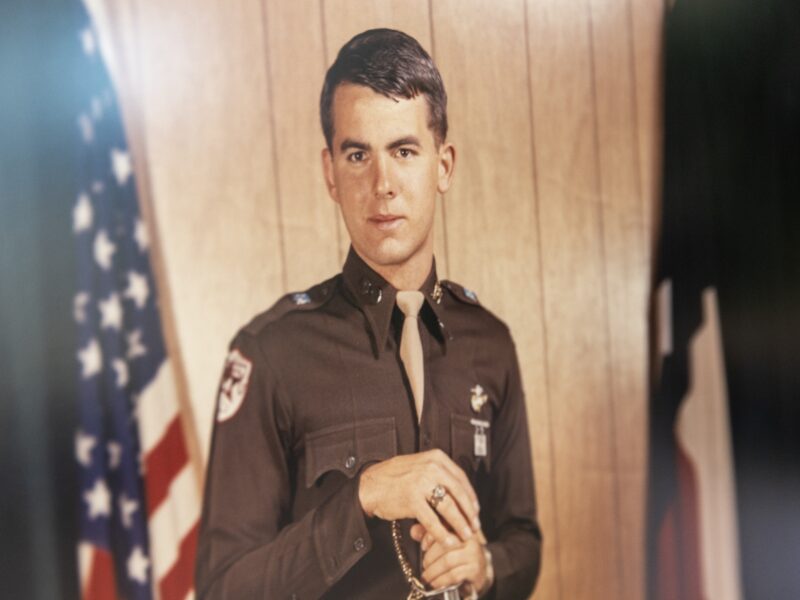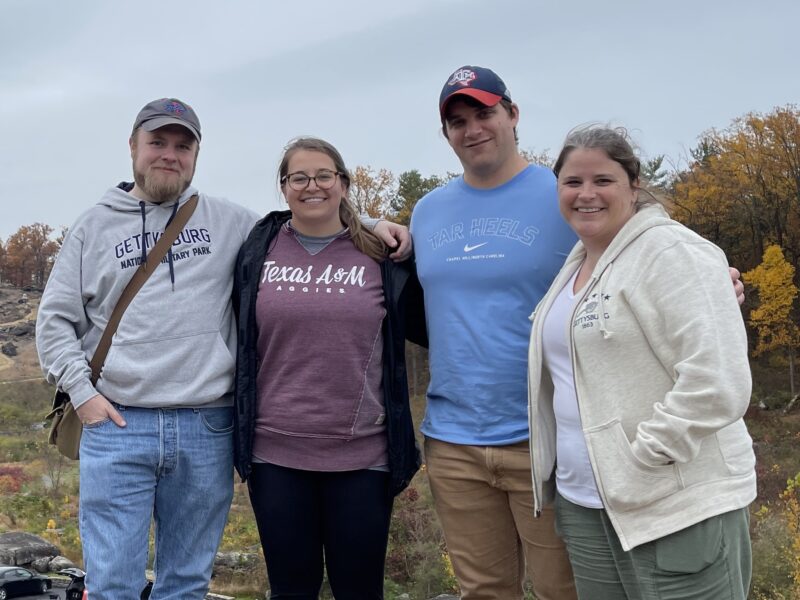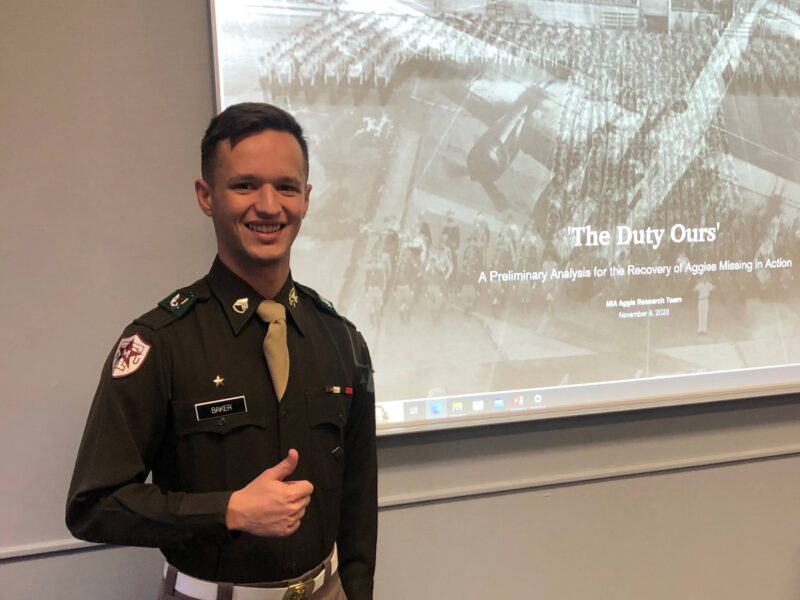Brigadier General Heading Texas A&M Student Body Talks Leadership, Diversity, Aggie Pride
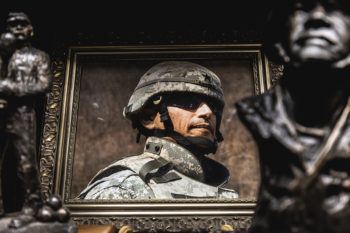
As a youth in Houston’s inner city, BG Joe E. Ramirez, Jr. ’79 (Ret.) never imagined the places he would go – to the farthest reaches of the globe and the highest levels of government and military, to the Commandant of the Texas A&M University Corps of Cadets and now leading one of the nation’s largest student bodies as Interim Vice President of Student Affairs at his alma mater.
Ramirez earned his bachelor’s degree in physical education from Texas A&M in 1979, his master’s in management from Webster University in St. Louis, Mo. in 1993, and a master’s in strategic studies from the U.S. Army War College, Carlisle, Penn. in 2000. He served in the U.S. Army for 31 years, including as Deputy Chief Of Staff for U.S. Central Command during Operations Iraqi Freedom and Enduring Freedom, Deputy Division Commander for the 2nd Infantry Division in Korea, and Deputy Director for Strategy, Plans and Policy for U.S. European Command in Germany.
His distinguished military career took him around the nation and the world. He witnessed the fall of the Berlin Wall firsthand, served in combat zones, commanded soldiers around the globe, and provided strategic counsel to the Secretary of Defense, Chairman of the Joint Chiefs of Staff, members of Congress and international leaders on a daily basis. He spent the last 10 ½ years as the 45th Commandant of the Corps (2010-21).
Texas A&M Today sat down with Ramirez to learn more about the life and service of this Aggie leader.
How did you first learn about Texas A&M?
My dad wanted me to go to college. I’m the oldest and no one in my family on either side had ever been to college. But I wasn’t sure about college; a lot of my friends were going to enlist in the Army or the Marine Corps, so I thought I’d do the same thing. But when I was in 10th grade, I was in downtown Houston one Saturday morning. That was back in the days when A&M played Rice, and I just happened to see the Corps of Cadets marching in downtown Houston. I saw the Aggie Band and I remember thinking excitedly, ‘Wow, I want to be a part of that!’ I played the alto saxophone. So I came to A&M and joined the Corps and became a member of the band. It was a lot harder than I thought it was going to be, but I was lucky to have parents who supported and encouraged me the whole way through. I was in the band all four years. My senior year I commanded B Company in the band and was on the bugle rank. It was truly exciting for me and also rewarding for my family to see such an achievement.
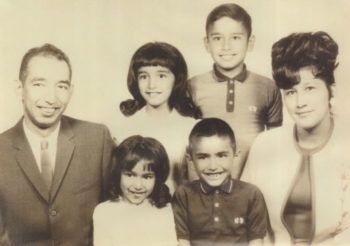
What was it like to be at Texas A&M as a first-generation, Hispanic student?
It was definitely challenging, especially my first semester. I didn’t know anything about the Corps and the discipline that was expected. It was tough. I wasn’t used to having orders shouted at me by upperclassmen – I did a lot of push-ups! I also wasn’t prepared for the academic rigor, but I learned pretty quickly you have to put a lot of effort into studying. There were many times that I wanted to quit. But I knew that would disappoint my parents greatly. So I stayed and I’m grateful for that.
I started at A&M in fall 1975 – there were about 28,000 students at that time, and Hispanics made up only about 2 percent. It was a culture shock coming from the inner city in Houston, and a predominantly Hispanic neighborhood. But my Corps buddies were always there for me. It was a tight community and we loved being Aggies and became close friends, helping each other through the tough times. No one ever said anything negative to me about being Hispanic or treated me differently because of that. I know my experience might not be the same as other people from minority groups who come to A&M, but for me, it was never an issue. We were all Aggies and that’s all that mattered. My college buddies are great guys, and we remain close friends to this day.
How did you come to join the Army?
At the end of my sophomore year, the Army ROTC program offered me a two-year ROTC scholarship, and I really needed the money. The scholarship covered everything except room and board. It was a proud day for me to be able to go back and tell my parents that the majority of my college education was now paid for and that all we had to pay was room and board. On the afternoon of Dec. 15, 1979, I was commissioned as a field artillery officer in the Army and that evening, I flew out to Fort Sill, Okla., where my military career began.
What did you learn about leadership in the military?
It’s all about motivation. I learned there are three types of soldiers: A team, B team and C team. An A team soldier is someone you can tell just once to do something and you can be sure it will get done and done well, no matter what. The B team soldier will get it done, but may take their time and you may have to go back and check periodically. Then there’s the C team soldier who’s just there for a paycheck, and when it hits 5 p.m., you better not be standing in the doorway because it’s quittin’ time and he’s out of there! The essence of good leadership is finding out how to motivate all three types of people. A lot of it is how you interface with them. I try to get to know my people, find out what motivates them, what they like, what they don’t like, what gets them excited. Then use what you know about them as a springboard to help them be more effective employees. However, sometimes it may come to a point where you have to say, ‘you either get on board or we have to cut you loose.’ My hope was to motivate my people enough so that never happened.
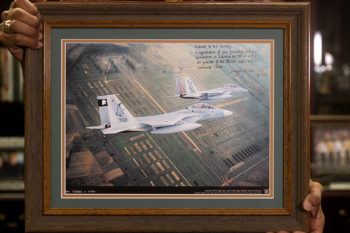
What were some of your favorite places live and work during your military career?
I was selected to go to the Army War College in Carlisle, Pa., for a year and my family and I loved it there. I was also fortunate to have visited Russia, Ukraine, Georgia, Azerbaijan, Armenia, Poland, Czech Republic, Hungary, Romania, and virtually all the countries that had once been part of the Soviet Union when I was at European Command. I also spent a lot of time in Israel working with the Israeli Defense Forces (IDF). Working in Israel with the IDF was life-changing for me. I’m a Mexican Catholic, but I would fight for Israel any day. I have many friends there, and I try to explain to fellow Americans about the existential threat they live under every single day. And in the shadow of the Holocaust, to be the strong nation they are today, it’s amazing.
As Commandant a few years ago, I took 26 cadets to Germany and Poland for a Corps Excursion, and we visited Auschwitz. Some people told me I shouldn’t take them there, but I said I have to. They need to see that place and know that the Holocaust was real, it happened, six million Jews killed. History isn’t pretty. Actually, that framed photo [pointing to a wall in his office] was given to me by Gabi Ashkenazi, Chief of Defense of IDF at the time, because I worked with them on their missile defense program. It’s a picture of two Israeli F-15 fighter jets, bought from the United States, flying over Auschwitz. He said to me, ‘I want you to understand the significance of this picture.’ And I do, and I’m very proud of it and the fact that it hangs on my wall.
How did you come to be the commandant of the Corps of Cadets and what did it mean to you as a former cadet?
I heard about the job opening from a good friend of mine from the A&M Hispanic Network. He emailed me while I was in Germany and said that the commandant position was open, and if I’d be interested in applying. I said, ‘Absolutely I’m interested,’ so I threw my hat in the ring. I was looking to get back to Texas because most of the last 10 years in the Army, I was either deployed or serving overseas. My dad and my kids were getting older and I wanted to come home and spend more time with family. There was a selection committee that contacted me about interviews, and after a phone interview, then a visit to campus for an in-person interview, I eventually got a phone call with an offer, and I was ecstatic.
It’s been an extremely rewarding 10 years of my life being the commandant and working with the cadets every day. I had three goals when I became Commandant: increase the number of cadets in the Corps, improve diversity across the Corps, and raise the Corps grade point average (GPA). We were able to achieve all three, with a lot of hard work and directed effort by my staff and the cadets. We raised the overall GPA for cadets from 2.6 to 3.2. We have great staff members in the Office of the Commandant who pour their hearts into helping these cadets every day, and it has led to great results. We’ve taken on diversity and we’ve made improvements – we went from 9 percent women in the Corps to 17 percent; Hispanics made up 13 percent of the Corps when I got here, and we’re 24 percent now. We still have work to do in increasing the numbers of African American cadets in the Corps, something we continue to work on every year.
How do you view issues surrounding race relations on campus?
What I try to focus on comes down to the old saying, “We are the Aggies, the Aggies are we.” It shouldn’t matter where you’re from, what your background is, your gender, religion, lifestyle – just come to A&M and learn what it means to be a Texas Aggie. That’s what binds us all together: our core values, our traditions, our dedication to service and to one another. I’ve been all over the world, literally, and when I have met someone wearing an Aggie ring, I don’t care who it is, or what their background is, that’s an Aggie right there, and they’re family. That’s all that matters. I take great pride in that, as all Aggies should.
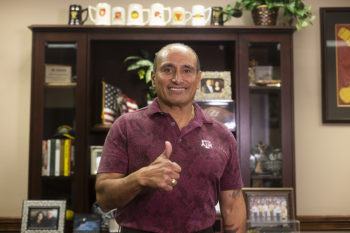
What have been your biggest challenges moving into the position with Student Affairs?
We have students who have been living in a global pandemic environment for the last 18 months to two years, and it has taken a toll in a lot of ways. Some of these students spent their entire freshman year online. They’re not even sure what a “normal” college experience looks like. So we’ve been helping to ensure they get the full “normal” college experience: going to in-person classes, joining a student organization, having meetings in person, going to tailgate parties and to football games. For many this is all new to them, and we’re trying to help them figure it all out and enjoy the Texas A&M college experience. It has also taken a toll on mental health – not just students, but faculty and staff as well. We try to help them find productive and meaningful ways to deal with all of this, and I like to think we are making progress. There are so many resources on campus to help as well. I highly recommend CAPS (Counseling & Psychological Services) for anyone who is feeling stressed or overwhelmed. Believe me, you are not alone. Mary Ann Covey and her team at CAPS do amazing work there. Our students are smart and resilient, and they are navigating these situations amazingly well overall.
Is there anything you’d like to add?
I personally believe that the students at Texas A&M are truly special and unique. They have a sense of purpose, of selfless service, a desire to give back, and they want to do good things for others. Some people my age sometimes speak poorly of this generation – they say they’re entitled, they can’t handle adversity, they’re all about themselves, etc. I always tell them that I disagree, and that they should come to Texas A&M, visit with our students, and see just how good these young people truly are. Just as its been for 145 years, Aggies are just a cut above, and today’s students make me very proud to be an Aggie.
Media contact: Lesley Henton, lshenton@tamu.edu
